Cascade glaze is a popular technique in the world of ceramics, known for its ability to create unique and vibrant finishes on pottery surfaces. This glazing method involves layering multiple colors or types of glaze to achieve a cascading effect that mimics the flow of water or other natural elements. The result is often a striking, dynamic piece that offers visual interest and depth.
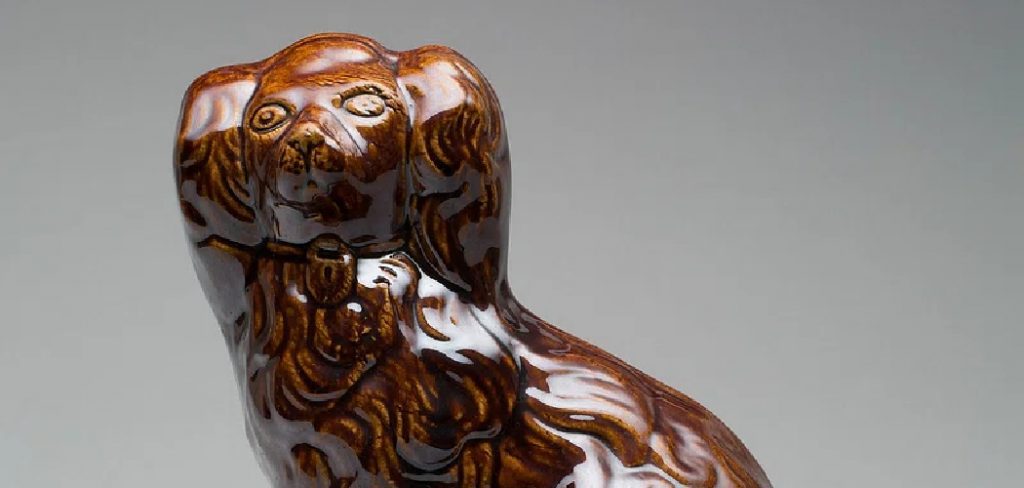
Whether you’re a beginner looking to experiment with your first ceramic project or an experienced potter aiming to enhance your skills, understanding the basics of cascade glaze application can significantly enhance your creative process. In the following sections on how to use cascade glaze on ceramics, we’ll explore the necessary materials, step-by-step techniques, and expert tips to master the cascade glaze method.
What is Cascade Glaze?
Cascade glaze is made up of multiple layers of glaze applied to a pottery surface, creating a cascading effect as the colors blend and flow together. The technique can be applied to any type of ceramic project, from functional pieces like mugs and bowls to decorative objects like vases and sculptures.
It’s essential to note that cascade glazing requires a bit of practice and experimentation to achieve the desired results. But with patience and attention to detail, you can create stunning pieces that are truly one-of-a-kind.
Materials You’ll Need
To get started with cascade glazing, you’ll need the following materials:
- Ceramic Piece/s to Glaze
- Multiple Colors of Glaze (at Least Two)
- Glaze Brushes or Sponges
- Water and Paper Towels for Cleaning Brushes/ Sponges
- Protective Gloves and Apron (Optional but Recommended)
8 Step-by-step Guides on How to Use Cascade Glaze on Ceramics
Step 1: Choose Your Ceramic Piece and Prepare the Surface
Selecting the right ceramic piece is the first crucial step in the cascade glazing process. Start by choosing a bisque-fired ceramic project, which is pottery that has been fired once and is ready for glazing. Ensure the piece is clean and free from dust or debris, as these can interfere with the glaze application and final result. Use a damp cloth or sponge to wipe down the surface gently, then allow it to dry completely.
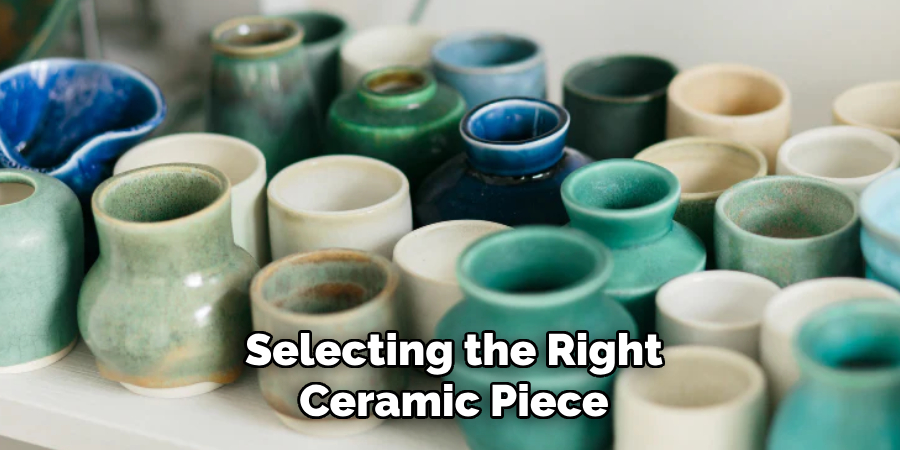
This preparation lays the foundation for a smooth and even application, ensuring the cascade glaze adheres properly to the ceramic surface. Taking the time to prepare your piece thoroughly will help highlight the dynamic characteristics of the cascade glaze technique.
Step 2: Mix Your Glazes
Before you start applying the glaze, make sure to mix each color thoroughly. Use a stir stick or palette knife to stir the glaze until it reaches a smooth consistency, free from any lumps or separation. Mixing your glazes well will ensure even coverage and prevent any clumping or streaking in the final result.
It’s also essential to keep your glazes at room temperature for optimal application. If they’re too cold, they may be difficult to work with, and if they’re too warm, they can dry out quickly.
Step 3: Choose Your Cascade Technique
There are various techniques for applying cascade glaze, so it’s best to experiment and find the one that works best for you. Some common methods include:
- Pouring glaze over the piece in a controlled manner
- Brushing or sponging different colors onto specific areas of the pottery surface
- Dipping the piece into separate containers of glaze, creating layering effects
Step 4: Begin Applying the Glaze
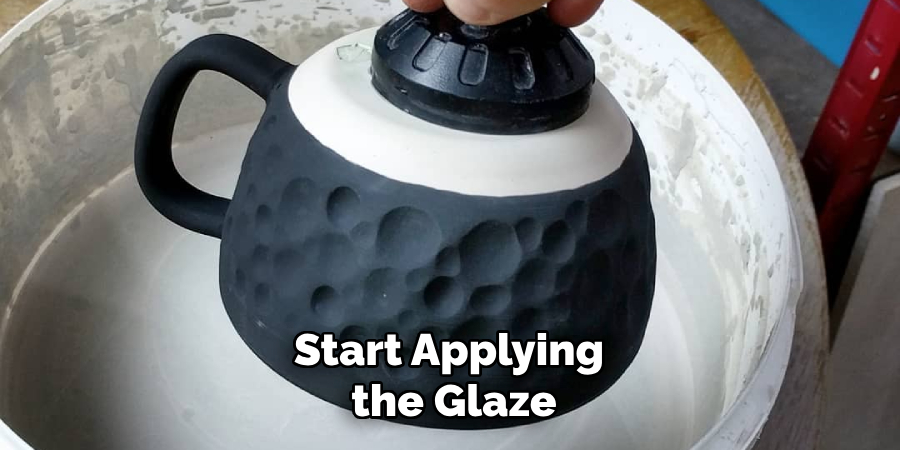
Once you’ve chosen your cascade technique, it’s time to start applying the glaze. Make sure your piece is on a stable and level surface to avoid any accidental spills or drips. Use a brush or sponge to apply the first layer of glaze evenly onto the surface. You can also pour or dip your piece into the desired colors if that’s part of your chosen technique.
Remember to leave some space between each color layer, so they have room to blend and create a cascading effect.
Step 5: Apply Multiple Layers of Glaze
After the initial application has settled, continue by adding more layers of glaze to build the cascading effect. This is where the magic of cascade glazing truly comes to life. Allow the first layer to partially dry, achieving a slightly tacky feel, before proceeding with subsequent layers. Begin with a lighter color base and overlay darker or contrasting hues to create depth and visual interest. Depending on your preferred outcome, you may use brushes or sponges to apply the glaze in varying strokes or patterns.
Pay attention to how each layer interacts, letting them blend naturally at their edges. Be cautious not to overload your piece with excessive glaze to avoid drips or glaze running, which can obscure details instead of enhancing them. Take your time with this step, as patience and practice will reward you with a stunning, multidimensional finish.
Step 6: Add Details with a Third Color (Optional)
Integrating a third color into your cascade glaze design can add intricate details and enhance the visual complexity of your ceramic piece. To do this, carefully select a glaze color that complements or contrasts with your existing palette. Using a fine brush or a small sponge, gently apply this third color onto targeted areas of your pottery, such as the rims, edges, or specific patterns you wish to highlight.
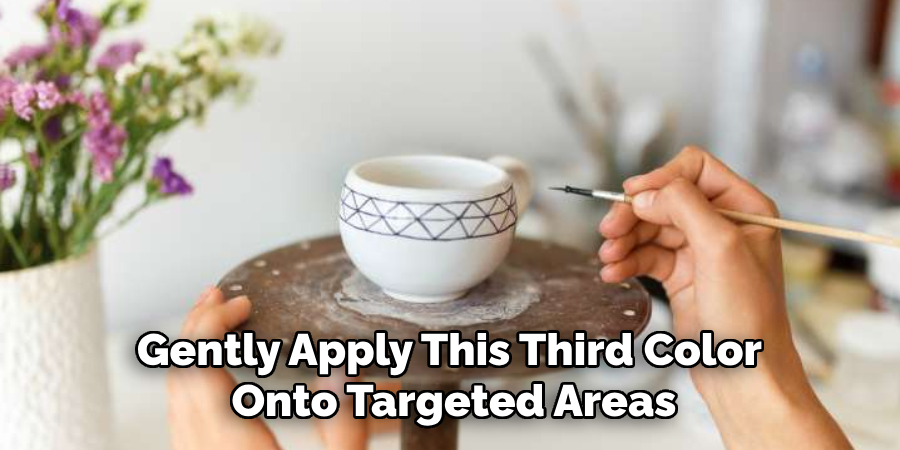
Be mindful not to overwhelm your work; subtle accents often produce the most striking effects. This optional step allows for personal expression and creativity, letting you experiment with various color combinations and techniques to achieve a unique, custom finish. Remember, the beauty of cascade glazing lies in the balance between complexity and elegance, so apply the third color sparingly to maintain harmony and flow in your design.
Step 7: Clean Up and Final Touches
After you’ve completed the glazing process, clean up any excess glaze on the bottom of your piece. Use a damp cloth or sponge to wipe off any unwanted drips or smudges, taking care not to disturb the layers on your piece’s surface. Avoid touching glazed areas with bare hands as this can leave fingerprints and affect the final result.
Before firing your pottery, ensure that all edges and rims are free from glaze build-up to avoid them sticking to kiln shelves during firing. If desired, you can use a sharp tool to scrape away any extra glaze around these areas.
Step 8: Fire Your Piece and Enjoy Your Finished Product

The final step in using cascade glaze on ceramics is firing your piece to achieve a glossy, durable finish. Follow the instructions on how to use cascade glaze on ceramics for your specific glaze and clay type, as they may vary. Generally, you’ll need to fire your pottery at high temperatures (between 1800-2100 degrees Fahrenheit) for it to reach its full potential. Once fired, let your piece cool down before handling it.
Congratulations! You’ve successfully used cascade glaze on ceramics and created a beautiful work of art that showcases the unique characteristics of this technique. Display or use your finished product with pride, knowing you’ve mastered this versatile and exciting glazing method. Remember to experiment and have fun with cascade glazing, as there are endless possibilities for creating stunning pieces. Happy glazing!
Additional Tips and Tricks
- If you’re new to using cascade glaze, start with simple designs and color combinations to get a feel for the technique.
- Use painter’s tape to create clean lines and separation between glaze layers if desired.
- Consider using underglazes or stains to achieve more vibrant colors in your cascade glaze design.
- Don’t be afraid to mix different types of glazes (e.g., matte and glossy) for added texture and visual interest.
- Practice makes perfect, so keep experimenting with different techniques, colors, and layering methods to find the one that works best for you. Remember to take notes on your process and results for future reference.
- Clean any tools used in the glazing process immediately after use to prevent the glaze from hardening and becoming difficult to remove.
- Allow your piece to cool down completely before handling it after firing to avoid potential breakage or damage. Remember, safety first!
- Have fun and don’t be afraid to get creative with cascade glazing! The possibilities are endless, and you may discover a new favorite technique along the way. Happy glazing!
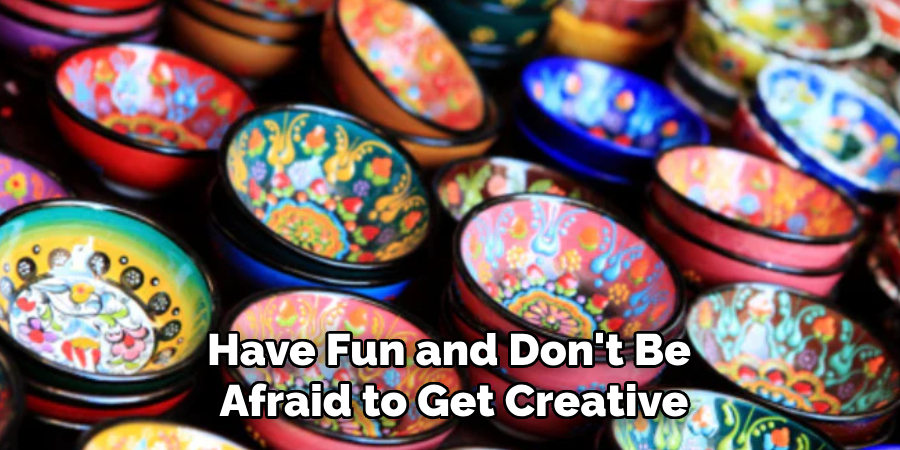
Frequently Asked Questions
Q: Can I Use Any Type of Glaze for Cascade Glazing?
A: Yes, you can use any glaze to achieve the cascade effect. However, make sure to test and experiment with different glazes to find the ones that work best for your preferred design and technique. Also, consider the type of clay you’re using as it can affect how the glaze behaves.
Q: Can I Use Cascade Glazing on Non-Ceramic Surfaces?
A: While cascade glazing is most commonly used on ceramics, you can experiment with this technique on other surfaces such as glass or metal. However, the firing process may differ, so be sure to research and test before attempting any projects on non-ceramic materials.
Q: How Many Layers of Glaze Should I Apply?
A: The number of layers depends on your desired outcome and personal preference. Generally, 2-3 layers are sufficient for achieving the cascade effect. However, feel free to experiment with more or less layers to create unique and stunning designs. Remember to let each layer dry before applying the next one.
Q: Can I Use Cascade Glaze on Functional Pottery?
A: Yes, cascade glazing can be used on functional pottery such as mugs or plates. However, keep in mind that some glazes may not be food-safe, so it’s essential to research and choose appropriate materials before using them on items meant for everyday use. Also, make sure to fire your pottery according to the manufacturer’s instructions for optimal durability and safety.
Conclusion
Mastering the art of cascade glazing opens up a world of creative possibilities to transform simple ceramics into vibrant, eye-catching works of art. This technique paves the way for exploring different textures, colors, and layering methods, allowing you to infuse each piece with your personal artistic touch. As you continue to experiment and refine your skills, remember that practice and patience lead to innovation and mastery.
Whether you’re a novice or a seasoned potter, the joy of creativity lies in the journey—each brushstroke and layer of glaze adding depth and character to your work. Embrace the process and let your imagination guide on how to use cascade glaze on ceramics you as you create beautiful ceramic pieces that are uniquely your own. Happy glazing!
Specialization:
- Master of wheel-throwing, hand-building, and advanced glazing techniques
- Focus on creating both functional pottery and decorative art pieces
Recognition:
- Celebrated by collectors and art enthusiasts for creating one-of-a-kind pieces that blend artistry with functionality
- Participates in local and national exhibitions, earning accolades for his innovative designs and craftsmanship
Passion:
- Deeply committed to exploring and pushing the boundaries of ceramic artistry
- Continuously experiments with new materials, firing techniques, and artistic concepts to evolve his craft
Personal Philosophy:
- Believes in the transformative power of art, aiming to evoke emotions and connections through his ceramic creations
- Advocates for sustainability in ceramics, using eco-friendly materials and practices whenever possible


